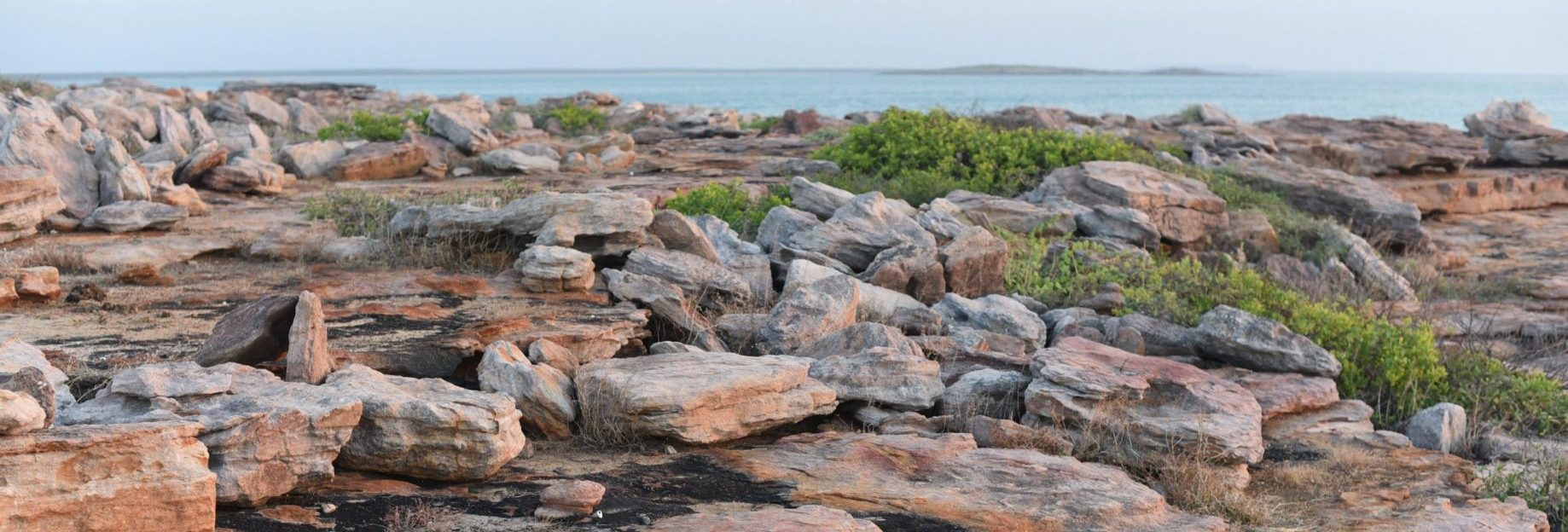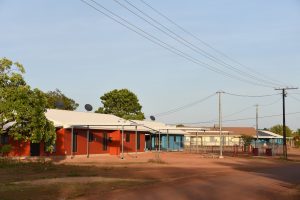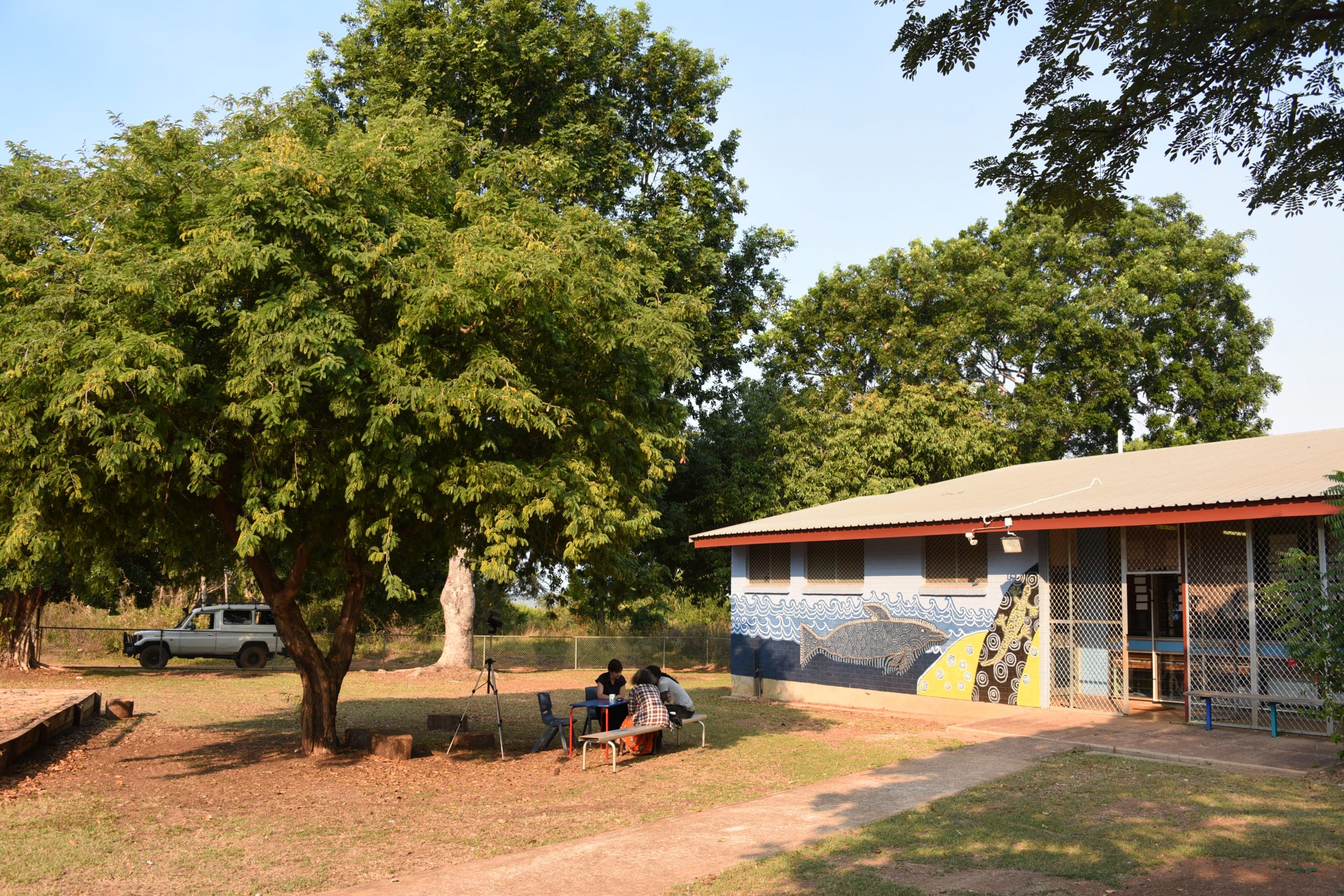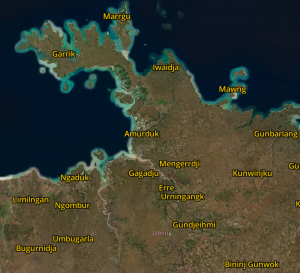Warruwi Community is on the lands of the Maung people and now you can find a variety of languages spoken here.

Warruwi Community

Image credit: Steven Bird
In 1916, the community started as a Methodist mission. Before that, it was an important place where Indigenous people and Macassans (Mangkajarra) came together every year to work together and share their knowledge and culture. Macassans were Indonesian fishermen who came to Arnhem Land for a few months every year to collect trepang (jarripang).
Mawng is currently categorised as a ‘strong language’ because it is learned by children as one of their first languages (Battin et al. 2020). Mawng has persisted despite having only a small number of speakers compared to other Indigenous languages still spoken in Arnhem Land, such as Kunwinjku (Bininj Kunwok), Burarra and Yolngu-matha. Mawng plays a central role at Warruwi, and this is where its support lies. The Mawng–English bilingual program (1973–2000) that operated at Warruwi School greatly improved the resources available in the language.
The languages of Warruwi
Warruwi and the west Arnhem region are highly multilingual. Most families who speak Mawng also speak other Indigenous languages at home such as the Kunwinjku or Kuninjku varieties of Bininj Kunwok, Burarra, varieties of Aboriginal English, or Dhuwal varieties of Yolgnu-matha. Mawng has been maintained within this multilingual environment, but other small languages such as Kun-barlang and Iwaidja that were once spoken alongside Mawng are now mainly spoken by older people. Iwaidja is the most closely related language to Mawng and they share many words. Mawng and Iwaidja are the only languages in the Iwaidjan language family that are still being spoken. The other languages in the Iwaidjan language family are Amurdak, Marrku, Wurrugu, Ilgar and Garig.

Image credit: Steven Bird

